Among my favorite trees in nature is this Sierra juniper.
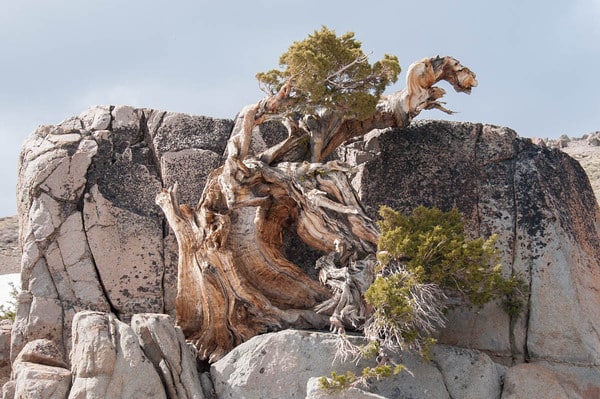
Spectacular Sierra juniper
The tree sits on a throne facing East where it enjoys limited protection from the wind. It gives evidence to a protracted and tortuous existence. How big is it?
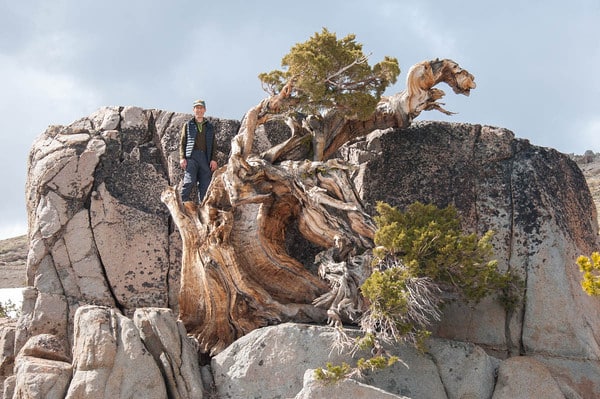
Standing on the rock behind the tree for perspective
Pretty big. The deadwood is terrifying.
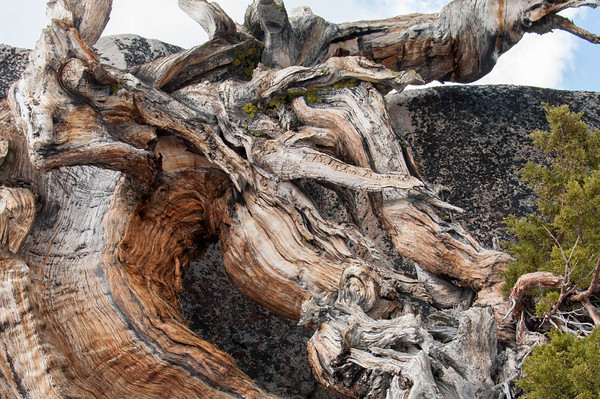
Deadwood detail
Possibly because I take so much enjoyment from being in the mountains, let alone being near such trees, this was the first visit on which I was able to step back a bit and appreciate how these junipers survive in such an environment. Some of what I noticed surprised me. Although the most sinuous specimens occasionally cascaded down the granite, they more frequently grew upwards, supported by the boulders from which their roots sprang.
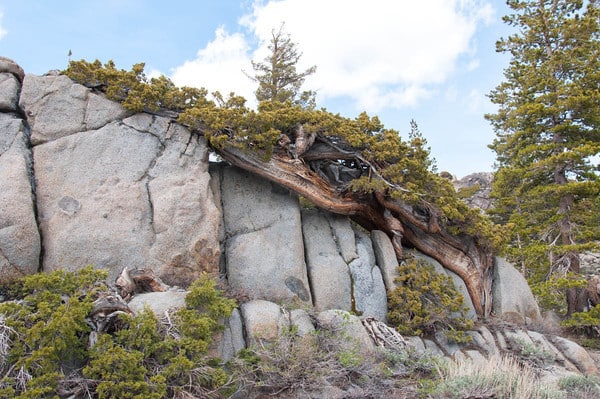
Juniper creeping up the rock
In addition to providing a solid anchor for the roots, the boulders provide support to branches attempting to grow towards the light. When there was no stone to cling to, and when a slight protrusion in the stone offered additional shelter, the occasional cascading branch descended.
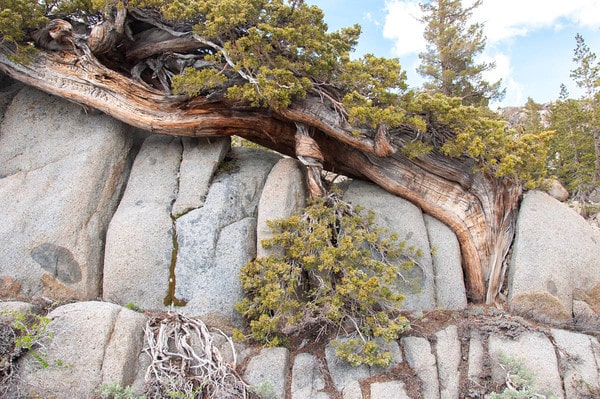
Cascading branch
Lower down on the same boulder was a fully cascading juniper.
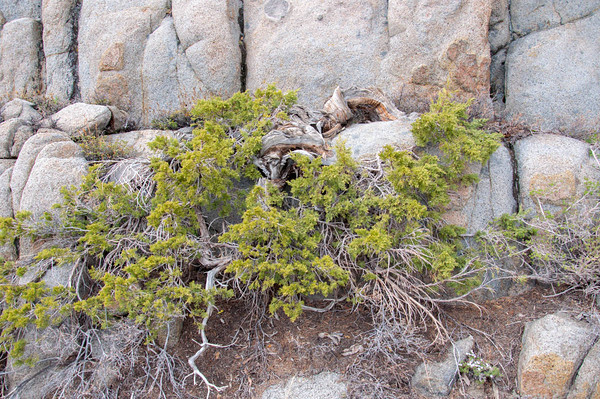
Cascade Sierra juniper
The deadwood and trunk line is impressive
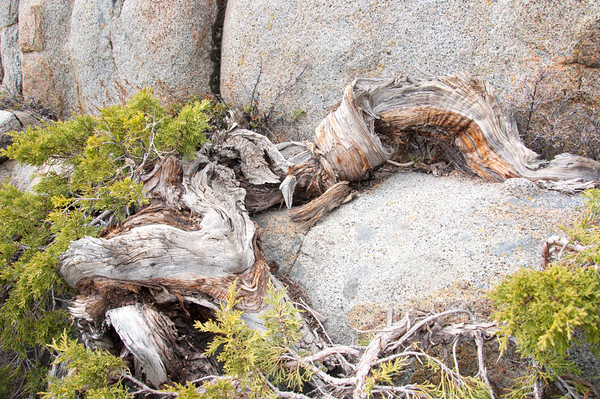
Contorted deadwood
I found a surprising number of trees that followed the same general pattern – roots emerging from stone and a silhouette that mirrored the shape of the boulder below. On the smaller side, some of these extended no more than 3′ above the base of the roots.
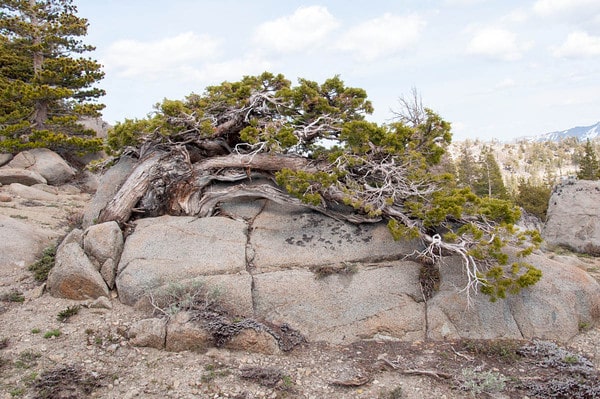
Compact juniper
Some larger trees followed the same pattern.
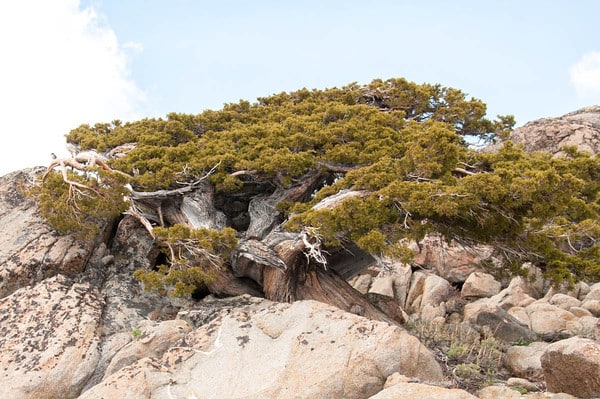
One of my favorite silhouettes
Junipers growing at the base of larger boulders took on quite different characteristics. The large juniper below sported a variety of deadwood ranging from sinuous and twisty to wild and splintered.
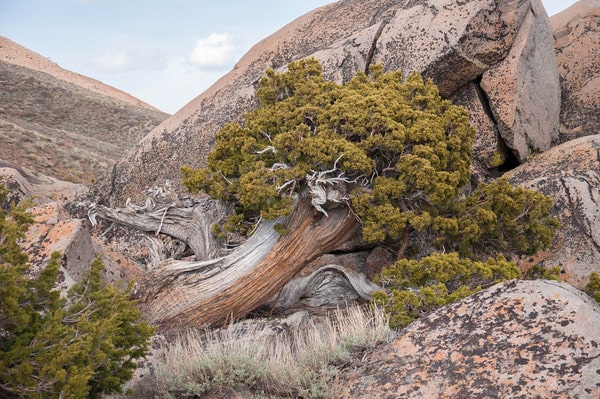
Large Sierra juniper – no twists in the main trunk
The branches were a different story.
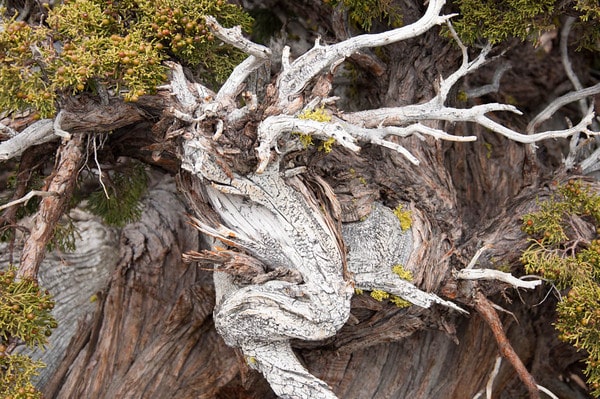
Zigs and zags
Below this, a lower trunk sported what looked like a wave or a fold of soft fabric.
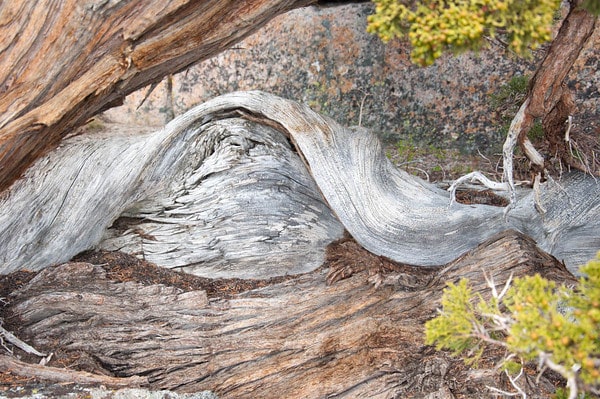
Deadwood on the lower trunk
The side with the greatest exposure to the elements looked it.
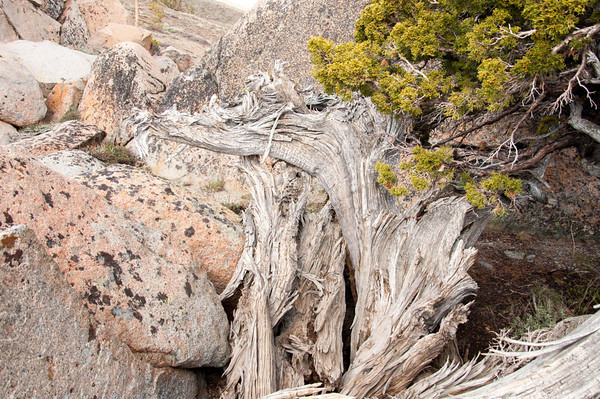
Wild deadwood
I took a different route than I’d taken in the past which brought me to a few new trees – some alive, some dead. The dead specimen below had some of the more beautiful and flame-like movement on the mountain.
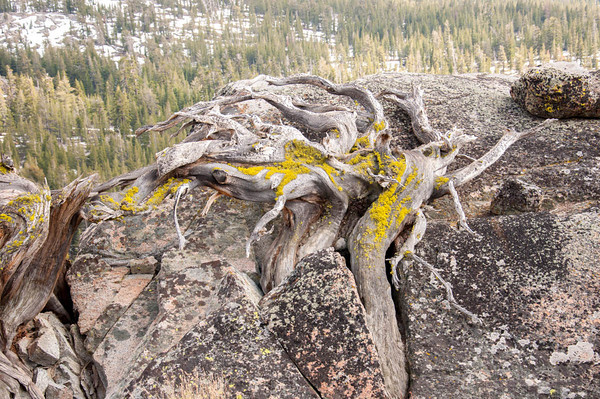
Long-dead juniper
In the lee of the stone on which this tree once grew was one of my new favorites. The shot below fails to convey the highlights, but the short version is that the tree starts with a base over 6′ wide and tapers to nothing at 3′ where the entire tree loops back down behind the shelter of the boulder. A cascading branch protrudes to the right.
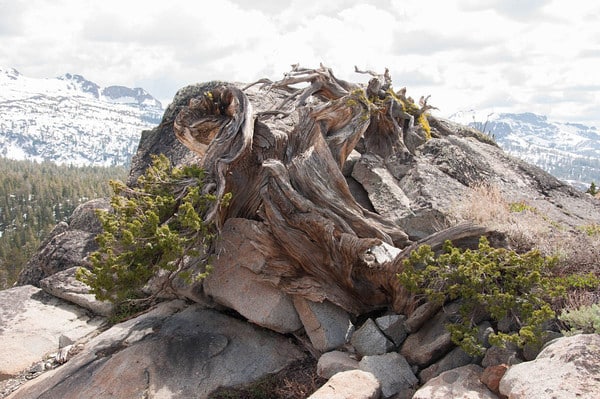
Looping apex, cascading branch
Just below this tree I found a large semi-cascade juniper. The giant base was about 6′ across.
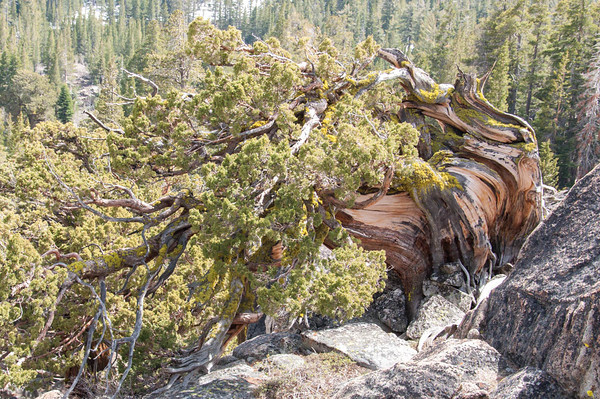
Semi-cascade Sierra juniper
Other junipers simply made up shapes like the corkscrew below.
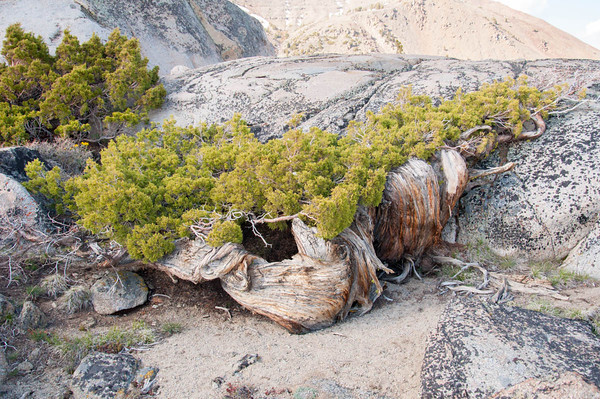
Corkscrew juniper
More common – and more iconic – were the specimens that rose up at one point but were subsequently buffeted by the elements and knocked down to a much lower height.
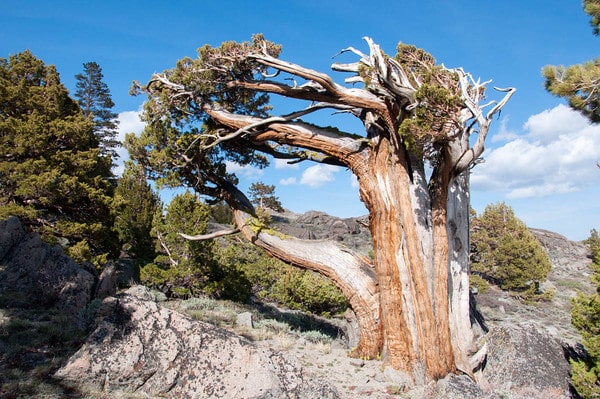
Upright juniper
In these specimens there is little question about which side bears the brunt of the elements.
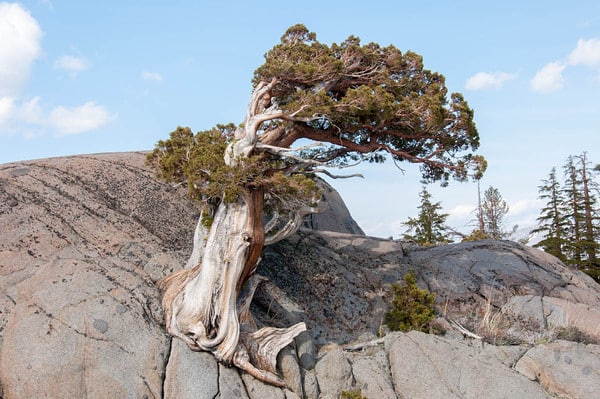
Windswept Sierra juniper
This phenomenon is borne out by the general landscape on which little sticks around that’s not anchored to stone.
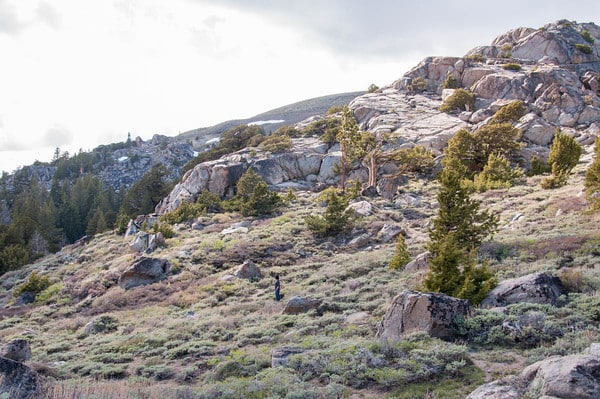
Pausing to enjoy the view
Up next – final highlights from Meiss Meadow.
Subscribe to Bonsai Tonight
New Posts Delivered Every Tuesday and Friday
mirko says
Super report!
Jardin says
Incredible, & beautiful photography to capture it.
Stephen Sikes says
Awesome photos & great report Jonas!
Tim Weckman says
Very inspiring- so meaningful to see these in situ– Many thanks!
Patricia Tatich says
The photos of deadwood in their natural setting are just beautiful! Time has come for bonsai societies to have a category for photos of these trees that have stood the test of time to be on-par with suiseki – thank you so much for sharing…Patricia in Upstate NY
Jeremiah Lee says
Love it! Beautiful! Fantastic blog!